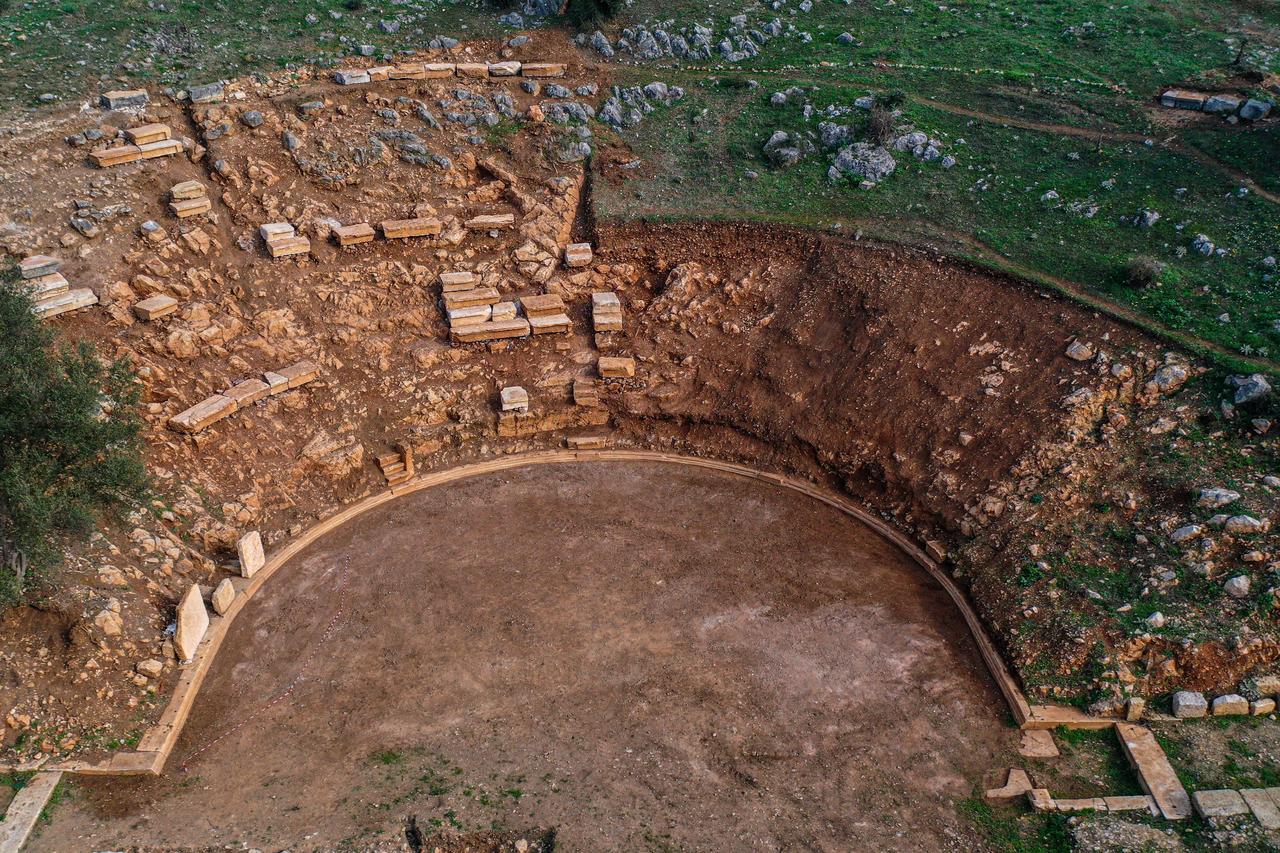
Visitors to the lakeside town of Golyazi in Bursa’s Nilufer district are seeing the ancient theater of Apollonia ad Rhyndacum come back into focus, as archaeologists return 42 displaced audience steps to their original positions through careful anastylosis—the re-erection of a structure using its original elements.
The work, officials say, will make the monument’s form easier to read today and may help bring it back into limited use in the long run in Türkiye.
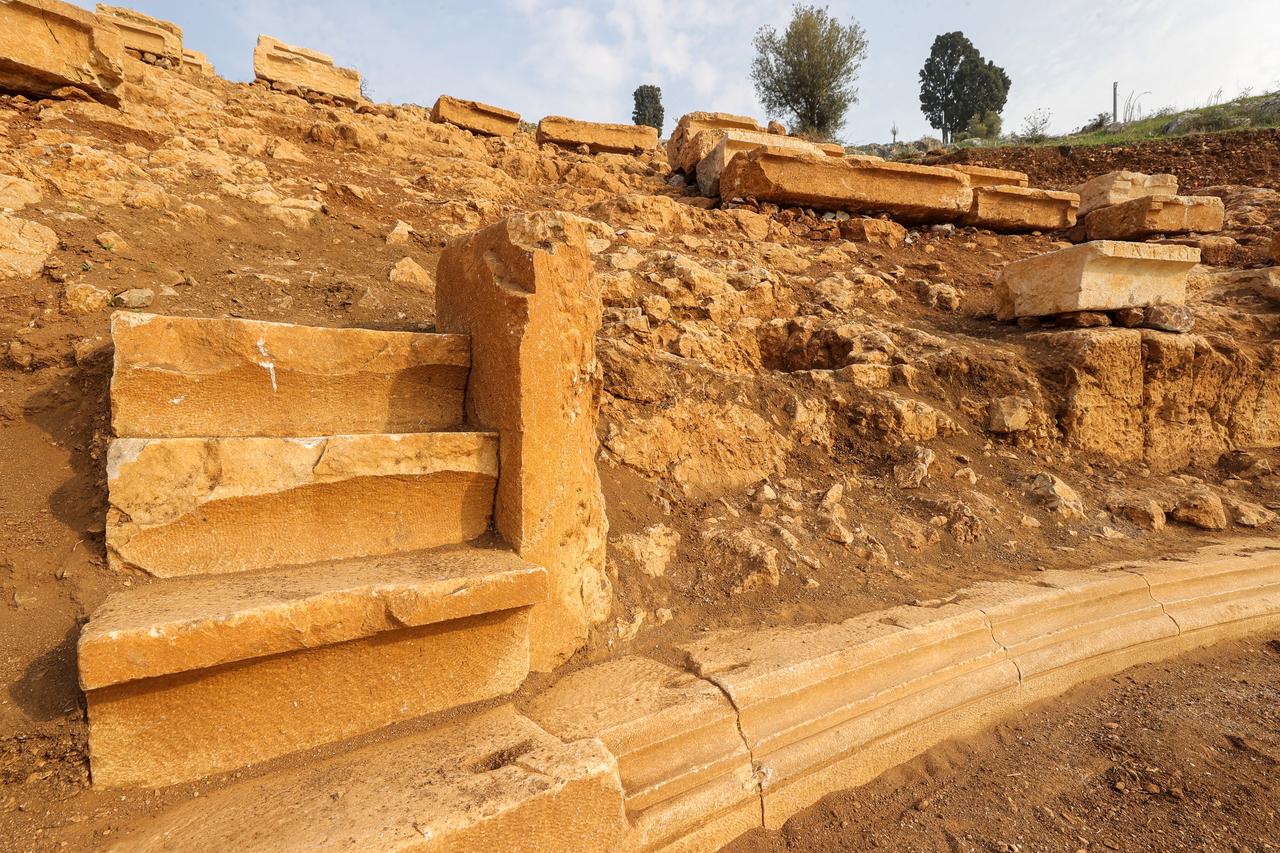
The theater’s excavation began in August 2021 with the permission of the Ministry of Culture and Tourism and support from Nilufer Municipality, under the direction of Professor Derya Sahin of Bursa Uludag University.
The team has identified seating blocks that had been removed or shifted—whether by earthquakes or by transfers elsewhere—and is relocating them to their proper sockets along the klimax stairways (the radial stair passages dividing the seating).
Sahin noted that only one bench row had remained in situ; the rest turned up in various places, some buried under soil and some sunk into the orchestra. The goal this season is to match the seats with their original anchors, including armrest-like boundary stones, and set them back in place.
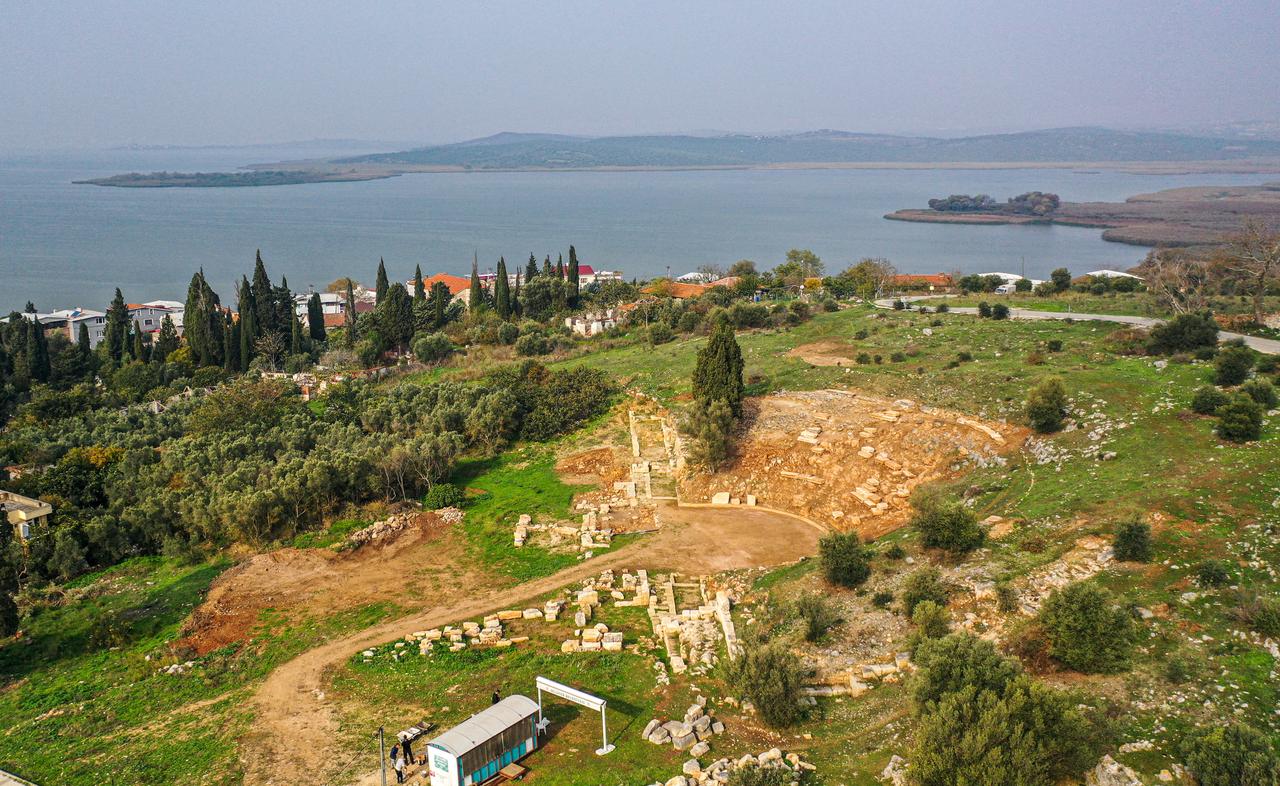
Archaeologists report that they have opened roughly 80% of the theater since the start of work. Built on the slope of Zambaktepe overlooking Lake Uluabat, the monument shows an early Hellenistic character yet follows a large, “giant-plan” Roman theater layout.
The cavea (tiered seating) spans about 80 meters in diameter, while the orchestra floor measures approximately 28 meters (262.4 feet) across. During stripping in the uppermost rows—the summa cavea—researchers documented foundation blockages that help trace construction phases and building sequences.
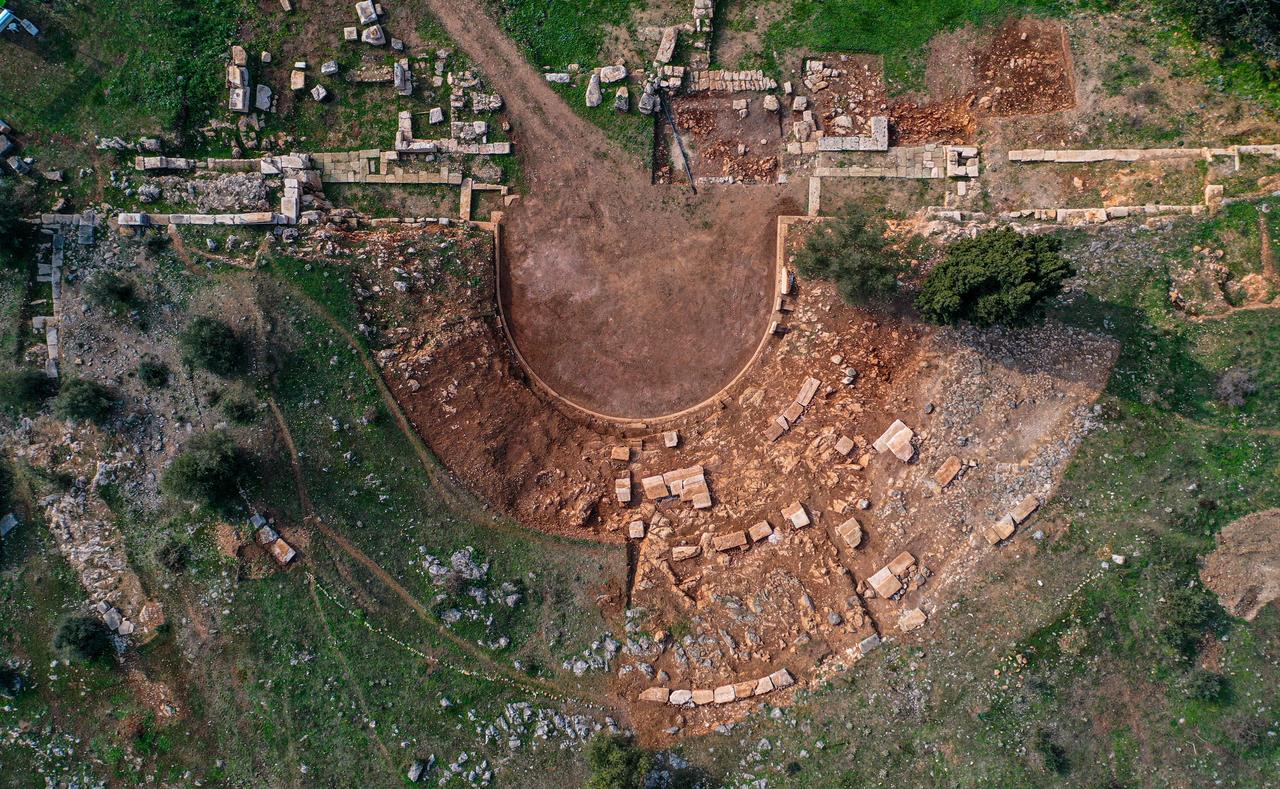
While examining a scattered upper seating row, the team documented the inscription “Lonidos,” dated to the second century A.D. in the Roman period. Specialists evaluate this as likely the name of an important female priestess.
The find adds to a growing set of inscribed seats that mark professional or social groups who frequented performances.
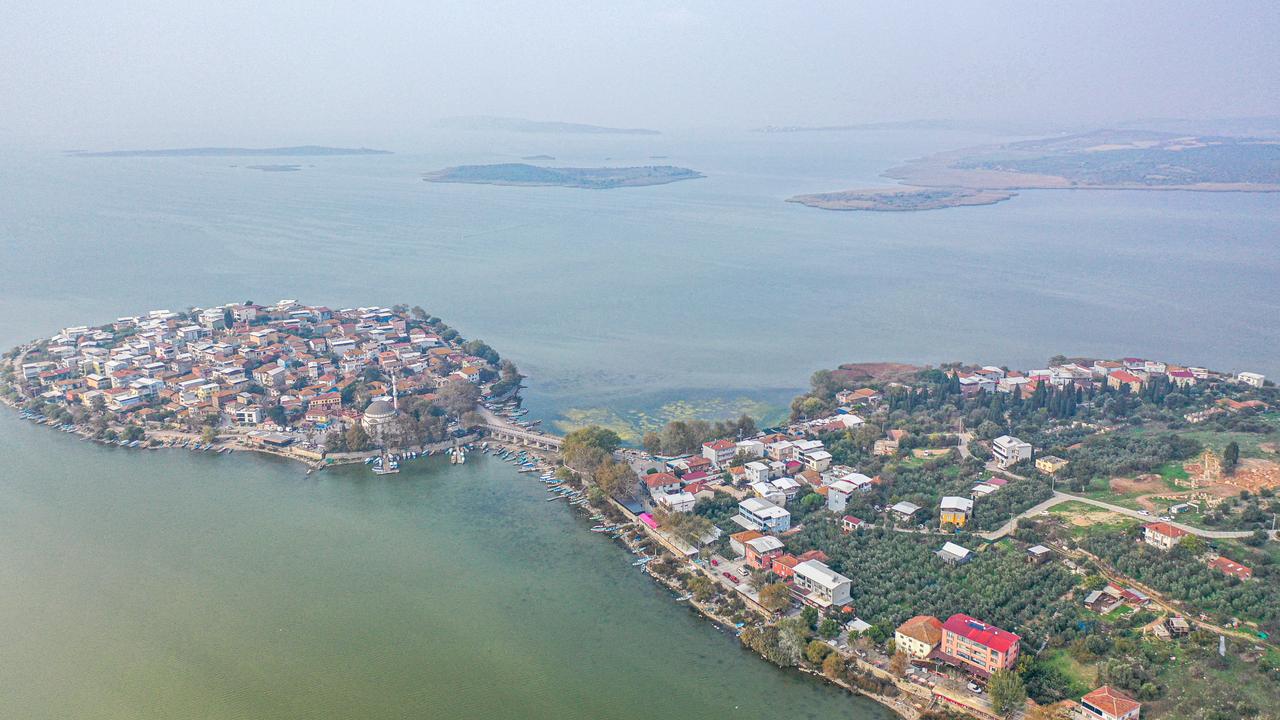
Golyazi is designated as an “urban archaeological site,” and the wider area has been evaluated within the Ramsar framework since 1998, a designation for wetlands of international importance. Despite that status, the fortification walls, necropolis, and theater had suffered heavy damage.
According to the excavation leadership, ongoing scientific work has driven that damage “nearly to zero.”
Within the “Legacy for the Future Project,” remaining structures are being protected and repaired, while weekend visitors—who arrive in large numbers—gain access to clear information about the city’s history and finds.
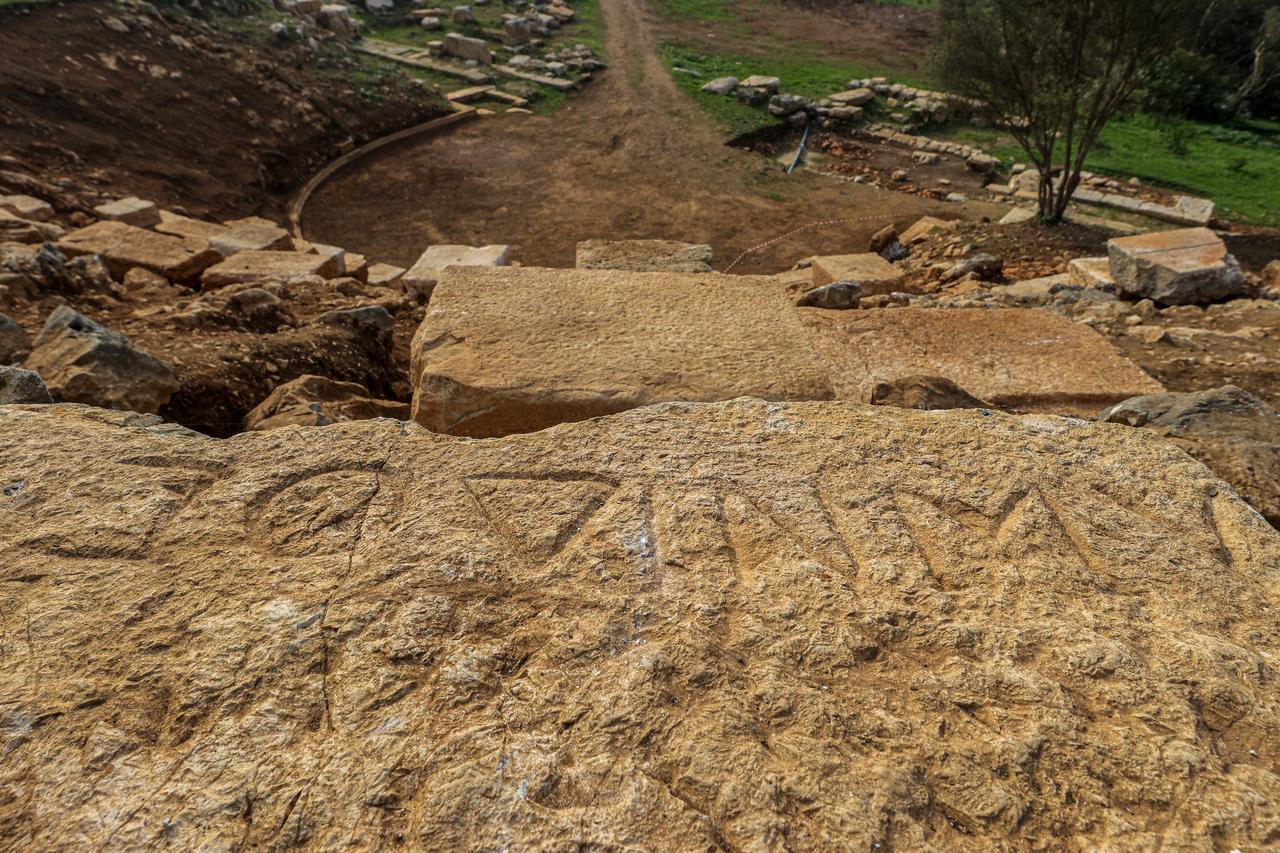
Because ancient theaters often stood in ritual landscapes linked to cult buildings, the team also probed the theater’s southwest.
They hoped for a temple-like structure connected to Apollo or Dionysos, the deities commonly associated with performance spaces. Several trials were opened, yet no definitive architectural remains have been identified so far.